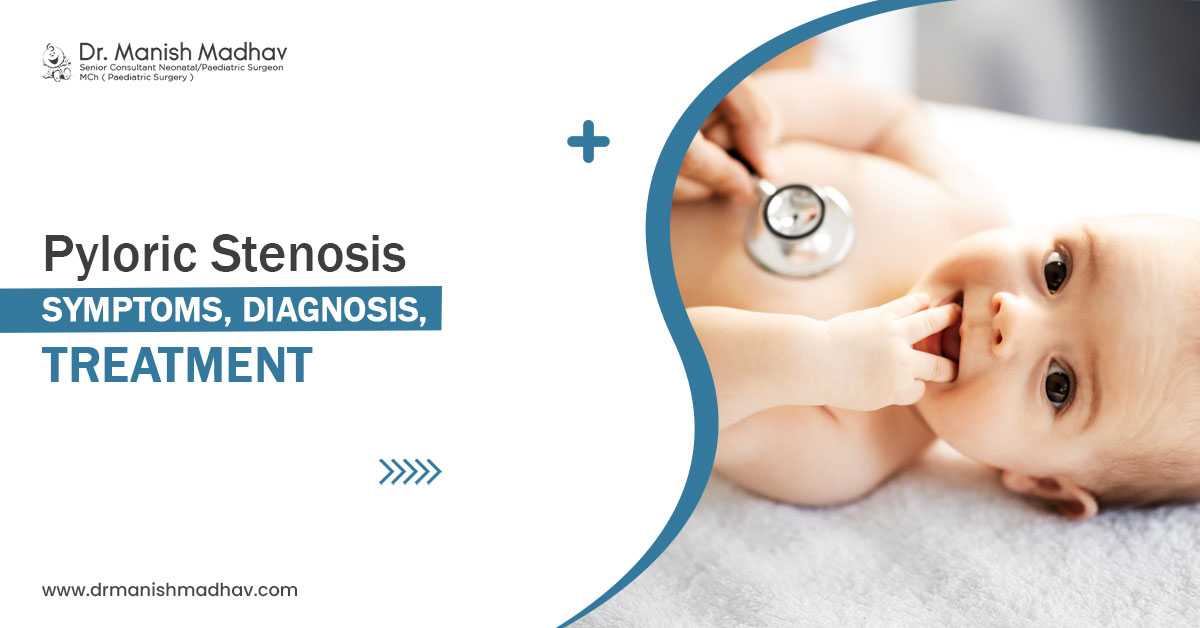The pylorus is the muscle at the end of the bellythat leads to the small intestine.Pyloric stenosis, also known as infantile hypertrophic pyloric stenosis (IHPS), is a condition that affects your infant’s pylorus. This is an uncommon condition that can cause the narrowing of the pylorus.
An untreated condition can be responsible for severe vomiting, dehydration, and weight loss. Therefore, medical attention is a must. For pyloric stenosis treatment in Siliguri, visit the best paediatrician in town.
Though pyloric stenosis is rare, it requires prompt medical care. This blog will help you explore its symptoms, diagnosis, and treatment.
Overview of Pyloric Stenosis
Pyloric stenosis occurs due to the thickening of muscles of the pylorus, which narrows the passage through which food passes from the stomach to the small intestine. Typically, pyloricstenosis develops later in life and is not present at birth.
This medical condition affects your baby’s ability to digest food properly. While the exact cause is unknown, pyloric stenosis has two major risk factors: genetic and environmental factors. Smoking during pregnancy, premature birth, family history, bottle-feeding over breastfeeding, etc. might act as risk factors.
Pyloric Stenosis – Understanding the Symptoms
Generally, the signs and symptoms of pyloric stenosis become noticeable when your baby is between 3 and 6 weeks old. Here are the most common signs parents should watch for:
- Frequent forceful vomiting (projectile vomiting)
- Hunger after feeding/ eating
- Abdominal (belly) pain
- Irritability
- Dehydration
- Constipation
- Small poops (stools)
- Weight loss
- Urinating less
- Fewer bowel movements
If you notice wavelike contractions that ripple across your baby's upper abdomen soon after eating and before vomiting, you should see a paediatrician. Plus, you may notice that your baby is crying without tears and less wet nappies when you change them due to dehydration.
Pyloric Stenosis – Diagnosis & Treatment
Diagnosis of pyloric stenosis starts with a physical examination by your pediatric doctor. After a physical exam, the paediatrician may recommend the following tests:
- Blood tests
- Abdominal ultrasound
- X-ray of the digestive system
Blood tests can give information about dehydration and electrolyte imbalance. An ultrasound of your baby’s abdomen is an effective diagnostic tool to view the thickened pyloric muscle and the degree of narrowing.
In some cases, child specialists prescribe an x-ray or barium swallow (upper gastrointestinal series) to observe the movement of liquid through your kid’s belly. For diagnosis and pyloric stenosis surgery in Siliguri, visit the top paediatric surgeon in town.
Once the diagnosis of pyloric stenosis is over, treatment is necessary to treat it. The only effective treatment for pyloric stenosis is surgery, known as a pyloromyotomy (a type of pyloroplasty surgery).
In pyloromyotomy, a paediatric surgeon will make an incision in the thickened pyloric muscle so that food caneasily pass into the small intestine. It is typically a minimally invasive surgery.
Thislaparoscopic surgery is relatively quick, with a high success rate. After pyloromyotomy, your baby will be given intravenous fluids for a few hours. Your baby may vomit for a few days.
Post-surgery, babies are usually able to start feeding again within 12-24 hours as guided by the surgeon. Make sure your baby gets proper follow-up checkups to monitor recovery and progress. Consult the best child specialist for pyloric stenosis treatment in Siliguri.






